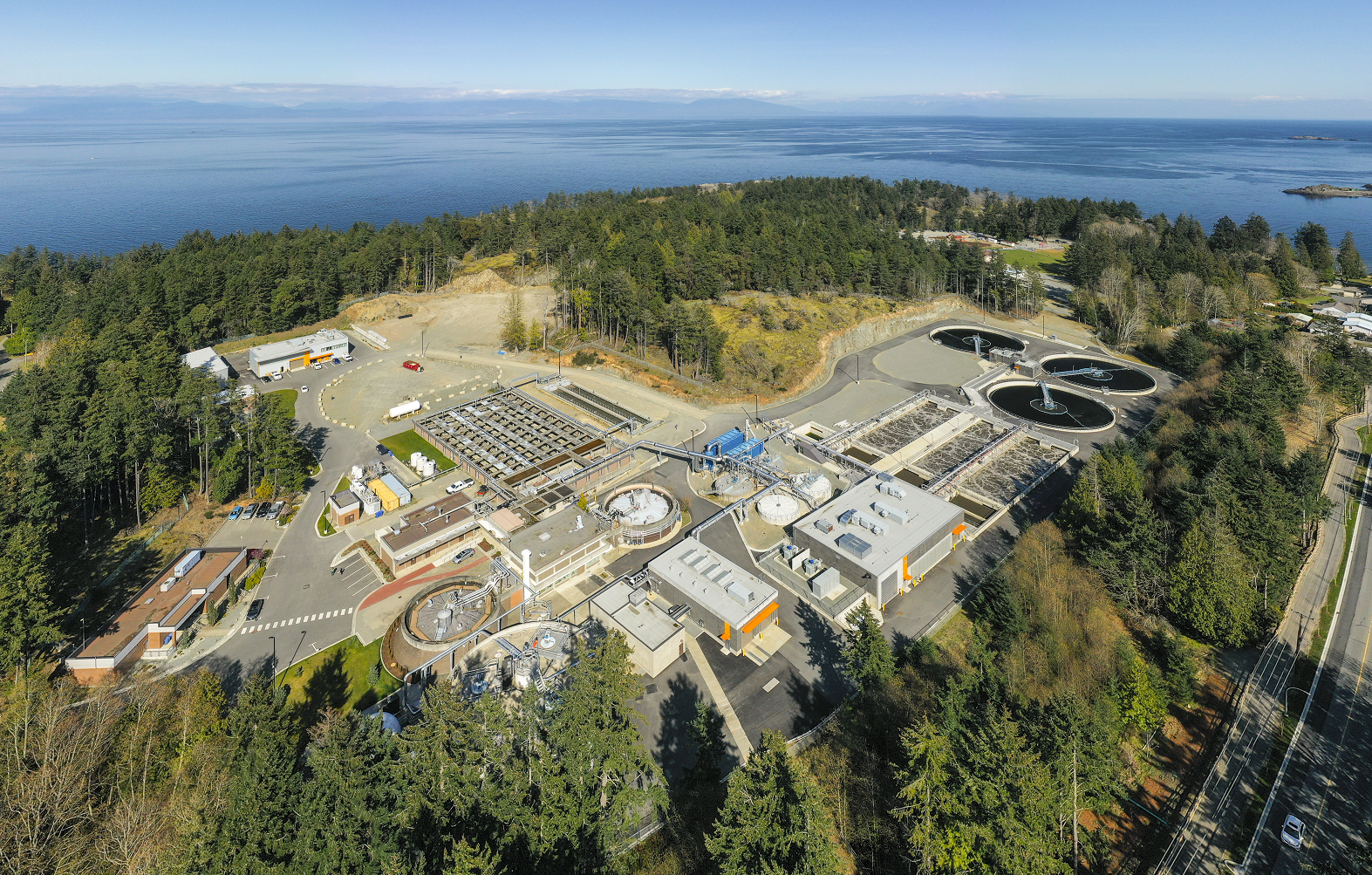Greater Nanaimo Pollution Control Centre

Greater Nanaimo Pollution Control Centre (GNPCC) treats wastewater from approximately 108,000 people in:
-
The City of Nanaimo
-
Snuneymuxw First Nation land
-
The District of Lantzville
GNPCC also treats septage from residential septic systems and wastewater from pump-and-haul properties.
Sewers are built to follow the natural slope of land, allowing gravity to do most of the work to transport wastewater. Low elevation areas use a pump station to pump the wastewater to a treatment plant. GNPCC uses three pump stations:
-
Wellington Pump Station
-
Departure Bay Pump Station
-
Chase River Pump Station
View a map of the sewer service area.
The GNPCC provides primary and secondary treatment. Through treatment, it removes more than 90% of the biochemical oxygen demand (BOD) and total suspended solids (TSS). Learn more about how treatment works and the different levels of wastewater treatment.
Biosolids, a soil-like material produced during the wastewater treatment process, are managed in the Regional District of Nanaimo’s Biosolids Management Program.
GNPCC treated over 12 billion litres of wastewater in 2024. Treated wastewater is discharged into the Strait of Georgia 2,030 m offshore at a depth of 70 m. For more information, see the 2024 GNPCC Annual Report.